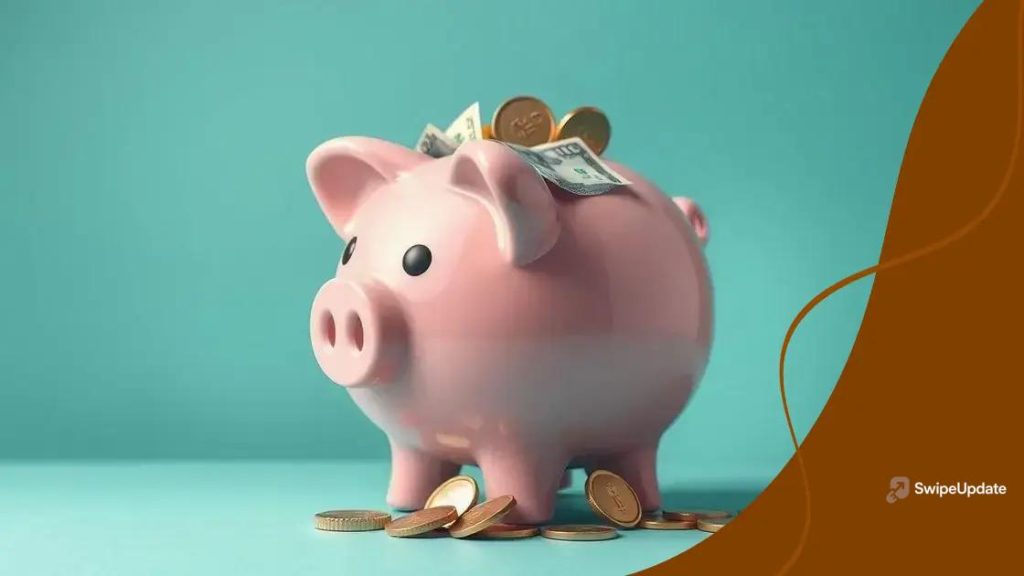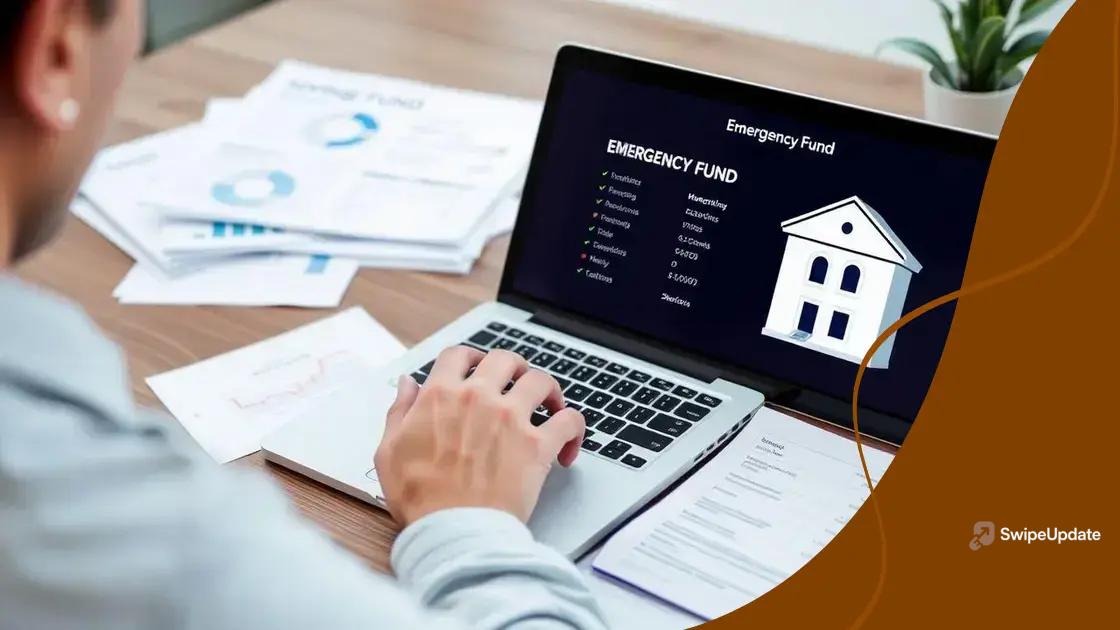Emergency fund best practices 2025: secure your future

An emergency fund is essential for financial security, and it should contain three to six months’ worth of living expenses, stored in a high-yield savings account to ensure quick access and optimal growth.
In 2025, knowing the best practices for your emergency fund is crucial. Have you considered how much it can safeguard your financial future? Let’s dive into strategies that will help you secure your savings.
Understanding the importance of an emergency fund
An emergency fund is an essential part of financial planning. It acts as a safety net, helping you address unexpected expenses like medical bills or car repairs without derailing your finances.
Many people wonder how much they should save. A good rule of thumb is to aim for three to six months’ worth of living expenses. This amount can provide peace of mind and security. However, every individual’s situation is unique, so adjust your goals to meet your needs.
Benefits of Having an Emergency Fund
Having an emergency fund can lead to several key benefits:
- Reduces stress during financial emergencies.
- Prevents you from going into debt.
- Offers greater financial stability.
Additionally, it’s important to choose the right place to keep your fund. Look for accounts that offer easy access and competitive interest rates. This ensures that your money is both safe and able to grow.
Remember, the goal of an emergency fund is to protect you from unforeseen circumstances. Being prepared can help you feel more secure and in control of your finances.
How much money should you save?
Knowing how much money you should save for your emergency fund is crucial for financial stability. Many people struggle with this question. A common suggestion is to save between three to six months’ worth of living expenses.
First, calculate your monthly essential costs, which include rent, utilities, food, and transportation. Analyze your expenses to gain a clear picture. Once you have this amount, multiply it by three or six to determine your savings goal.
Factors to Consider
When deciding on your savings amount, think about personal circumstances:
- Your job stability and income predictability.
- Existing debts or financial obligations.
- Family size and dependencies.
It’s important to tailor your strategy based on your lifestyle. For example, if you have a stable job, three months may be sufficient. However, if your income is less predictable, it’s wise to aim for six months or more.
Additionally, consider your future plans. If you’re planning major life changes, like moving or starting a family, you might need a larger fund. Overall, the focus should be on creating a safety net that offers you peace of mind during unexpected situations.
Where to keep your emergency fund

Knowing where to keep your emergency fund is just as important as deciding how much to save. Your choice of account can affect the accessibility and growth of your savings. Several options are available, each with its advantages.
Many people opt for a high-yield savings account. These accounts typically offer better interest rates compared to traditional savings accounts, allowing your money to grow faster. They also tend to have easy access, which is crucial during an emergency.
Other Options
Consider these alternative places to keep your fund:
- Money market accounts: These accounts often offer higher interest rates and check-writing abilities.
- Certificates of deposit (CDs): CDs can yield higher interest over fixed terms, but they may limit quick access to your funds.
- Digital banks: Many online banks provide better rates and lower fees, making them a good choice.
It’s essential to ensure that whatever account you choose is FDIC insured. This means your money is protected by the government up to a certain amount, adding to your security.
Ultimately, your choice should reflect your personal financial situation and how quickly you might need to access your emergency funds. Ensuring easy access coupled with decent growth is key to managing your financial safety net effectively.
Tips for building your emergency savings
Building your emergency savings requires careful planning and discipline. With the right strategies, you can create a financial cushion that protects you during unexpected situations. Start by setting a clear savings goal. Having a specific target in mind, such as three to six months of living expenses, will motivate you to save consistently.
Next, consider automating your savings. By setting up automatic transfers from your checking account to your savings account, you ensure that saving becomes a regular habit. This way, you won’t be tempted to spend the money before saving it.
Practical Tips for Successful Saving
Here are some additional strategies to help you boost your emergency fund:
- Create a budget: Track your income and expenses to identify areas where you can cut back.
- Set aside windfalls: Use bonuses, tax refunds, or gifts to contribute to your emergency savings.
- Avoid unnecessary expenses: Identify non-essential spending and redirect those funds towards savings.
It’s also beneficial to review your emergency fund regularly. Adjust your savings target as your income or expenses change. If you find yourself in a stable financial position, consider increasing your savings goal.
Lastly, stay committed. Building an emergency fund takes time and effort, but the peace of mind it provides is well worth it. By following these tips, you can ensure that your financial safety net grows strong and reliable.
Common mistakes to avoid with emergency funds
When managing your emergency fund, it’s crucial to avoid common mistakes that can undermine your efforts. Many people think that once they have a fund set up, they can just forget about it. This is not true. Regular maintenance and awareness are key to ensuring your fund remains effective.
One major mistake is not saving enough. Many individuals underestimate how much they need for emergencies. As a result, they may only save a month’s worth of expenses, which can leave them vulnerable. Aim for at least three to six months’ worth of living expenses to truly protect yourself during tough times.
Common Pitfalls
Here are some mistakes to be aware of:
- Using the fund for non-emergencies: Keep your emergency fund for real emergencies only. Avoid dipping into it for planned expenses like vacations or new gadgets.
- Not reviewing your fund: Life changes, and so do your financial needs. Review your fund regularly to ensure it still meets your needs.
- Choosing the wrong account: Avoid keeping your fund in a low-interest account. Look for high-yield savings or money market accounts to make your savings work harder.
- Ignoring inflation: Over time, inflation can erode the purchasing power of your savings. Adjust your savings goals periodically to account for this.
By being aware of these common mistakes, you can build a more effective emergency fund that truly serves its purpose. Staying disciplined and informed is vital for your financial security.
FAQ – Frequently Asked Questions about Emergency Funds
What is an emergency fund?
An emergency fund is a savings account set aside for unexpected expenses, such as medical bills or car repairs, ensuring financial security.
How much money should I save for my emergency fund?
Aim for three to six months’ worth of living expenses to adequately cover unexpected financial burdens.
Where is the best place to keep my emergency fund?
A high-yield savings account is ideal, as it offers easy access while providing better interest rates than traditional accounts.
What common mistakes should I avoid with my emergency fund?
Avoid using your fund for non-emergencies, not saving enough, or keeping it in low-interest accounts, as these can undermine your financial preparedness.
